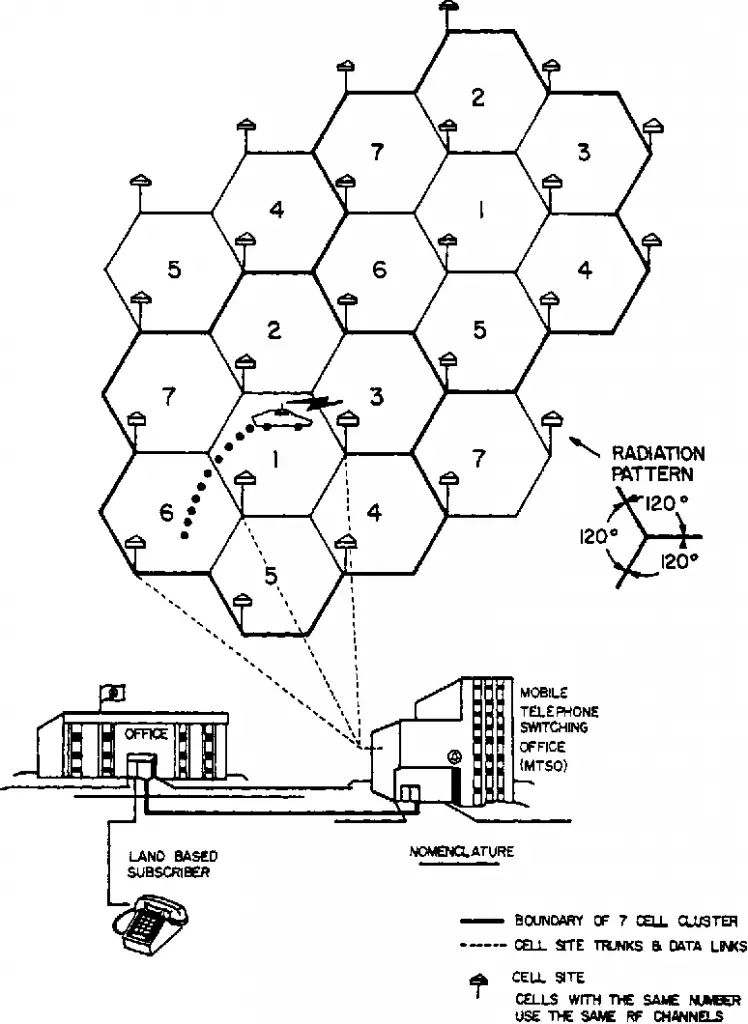Definition of Advanced Mobile Phone Service (AMPS) in Network Encyclopedia.
What is Advanced Mobile Phone Service (AMPS)?
AMPS stand for Advanced Mobile Phone Service, is the standard analog cellular phone service used in North and South America. Advanced Mobile Phone Service (AMPS), which was introduced by AT&T in the early 1980s, was the first generation of cellular phone technology and is widely deployed throughout the United States.

How Advanced Mobile Phone Service works
AMPS uses frequencies in the 800-MHz to 900-MHz range of the radio spectrum. It modulates a 3-kHz voice channel onto 30-kHz FM carrier signals using Frequency Division Multiple Access (FDMA) to create a series of 30-kHz channels. Separate channels are used for base station to mobile transmission (forward channels) and mobile station to base transmission (backward channels). The resulting allocation of bandwidth for each channel results in a maximum of approximately 800 simultaneous phone conversations per operator.
Because the population of most cities would suggest that 800 simultaneous phone conversations is far from enough, the idea was developed to partition the coverage of cities into a number of small areas called “cells.” Each base station uses a limited-power transmitter with a directional antenna to provide coverage for a small geographical cell (from which the term “cellular communication” arose). A typical cell ranges from .5 kilometer to 20 kilometers in size, depending on whether the coverage is in a densely populated urban area or a sparsely populated rural one. Mobile users’ phones also have limited transmission power, meaning that communication is usually limited to the immediate cell the user is in. As a user moves from one cell to another, the signal is smoothly picked up from the new cell. Adjacent cells use different frequencies, which prevents interference.
Handheld AMPS cellular phones have power levels generally under 0.6 watts with a range of about 5 miles from the base station, while power levels in vehicle-mounted phones reach up to 3 watts with a range of 15 miles. Base stations themselves generally have power levels up to about 1 kilowatt.
Because of the need for data transmission and security (encryption), digital cellular phone services are increasing in popularity.